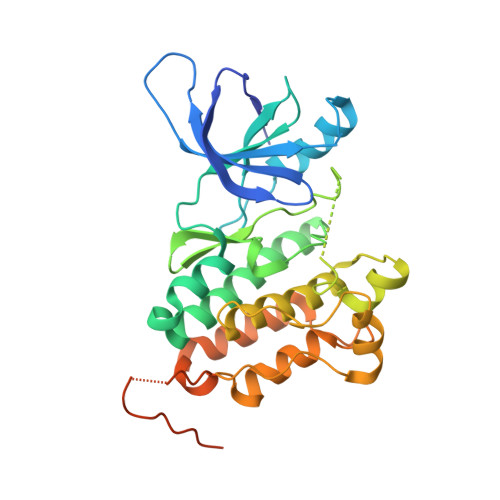Mechanism of Activation and Inhibition of the HER4/ErbB4 Kinase.
Qiu, C., Tarrant, M.K., Choi, S.H., Sathyamurthy, A., Bose, R., Banjade, S., Pal, A., Bornmann, W.G., Lemmon, M.A., Cole, P.A., Leahy, D.J.(2008) Structure 16: 460-467
- PubMed: 18334220
- DOI: https://doi.org/10.1016/j.str.2007.12.016
- Primary Citation of Related Structures:
3BBT, 3BBW, 3BCE - PubMed Abstract:
HER4/ErbB4 is a ubiquitously expressed member of the EGF/ErbB family of receptor tyrosine kinases that is essential for normal development of the heart, nervous system, and mammary gland. We report here crystal structures of the ErbB4 kinase domain in active and lapatinib-inhibited forms. Active ErbB4 kinase adopts an asymmetric dimer conformation essentially identical to that observed to be important for activation of the EGF receptor/ErbB1 kinase. Mutagenesis studies of intact ErbB4 in Ba/F3 cells confirm the importance of this asymmetric dimer for activation of intact ErbB4. Lapatinib binds to an inactive form of the ErbB4 kinase in a mode equivalent to its interaction with the EGF receptor. All ErbB4 residues contacted by lapatinib are conserved in the EGF receptor and HER2/ErbB2, which lapatinib also targets. These results demonstrate that key elements of kinase activation and inhibition are conserved among ErbB family members.
Organizational Affiliation:
Department of Biophysics & Biophysical Chemistry, Johns Hopkins University School of Medicine, Baltimore, MD 21205, USA.















